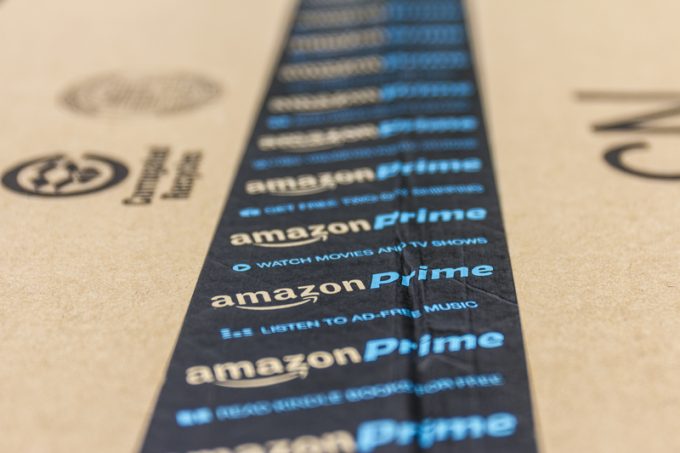'One FedEx' – what to expect
Let’s kick off

Amazon remains in the driving seat in the US e-commerce market.
Having unveiled a deferred service on the heels of moves to double same-day delivery capabilities, the company was the first out of the gate in announcing surcharges for this year’s peak shopping season.
Two weeks ago the e-commerce giant launched Amazon Shipping, offering deliveries of parcels up to 50lbs within the contiguous US in 2-5 business days.
The slower offering came after Amazon’s top brass unveiled plans to double its same-day delivery station network in the coming years, continuing its push for rapid deliveries (see, Loadstar 11 August).
In the first six months it delivered more than 1.8bn units to US subscribers to its Prime programme same-day or next-day – a fourfold increase over the first half of 2019.
Amazon Shipping taps into the US Postal Service for its wide coverage and targets merchants that place orders through its marketplace, their own websites and other selling channels, which marks a direct push into third-party deliveries.
Historically, Amazon has aimed its delivery service at merchants that use its marketplace and/or the company’s fulfilment offering.
According to Worldwide Partner Selling Services, over 60% of sales on Amazon come from independent sellers, which suggests a sizeable market to go after.
Amazon Shipping had been on offer in a handful of cities by 2020, but the pandemic caused the company to shelve it while it was wrestling with surging volumes.
Besides targeting a larger shipper base, Amazon is looking to beef up its income through a peak season surcharge. Based on the size of a shipment, this can range from 20 cents to $2.50.
“This seasonal fee is similar to those charged by other major carriers, and covers increased fulfilment and transport operating costs during the busy holiday shopping season,” it said. It kicks in on 15 October and runs until 14 January.
According to one report, Amazon will also add a 2% fee to charges for its Seller Fulfilment Prime programme.
Until last year, Amazon had eschewed a peak delivery surcharge, but the combination of rising costs and shrinking volumes prompted management to change its tune.
Last year saw a veritable race to implement peak season parcel surcharges. FedEx was first off the mark in mid-August unveiling a surcharge for as early as 5 September. UPS followed later that month with its announcement.
This year the two integrators have been quiet so far. John Haber, chief strategy officer of Transportation Insight, said: “We’re kind of a little bit late this year.”
He suspects that FedEx management may have its hands full with the integration of its Ground and Express networks and the contract negotiations with its pilots, and may be waiting for UPS to take the lead. UPS is eager to regain business and margins after completing its contract negotiations, which resulted in a $30bn windfall for its employees, according to the Teamsters union.
UPS said it would claw back business lost during the negotiations, but the push will not be based on pricing, but service.
“There are definitely concessions on price going on, but they’re not going to buy business,” Mr Haber commented.
Officially, FedEx will not levy a peak season surcharge this year. A few days ago the company officially banned the word “peak” from its pricing terminology – instead, there will be ‘demand surcharges’.
Those will be based on shipment volume and network capacity, explained Mr Haber. Effectively this marks a move toward dynamic pricing, a concept that UPS top brass has also hinted at. He added that some of the supposed temporary or seasonal surcharges have never been rescinded.
And faced with elevated costs and sluggish demand, the integrators will implement hefty surcharges, he predicted.
“Volumes are significantly down, but there’s still not enough competition. They can continue to raise prices,” he said. “The parcel market is not like the spot market for containers, or in trucking.”
The smaller players that have gained business over the past couple of years are not likely to challenge the big guns with aggressive pricing, he reckons.
“They all realise it’s hard to make money. Last-mile delivery is extremely costly,” he noted, adding that the cost of capital is also very high.
Comment on this article